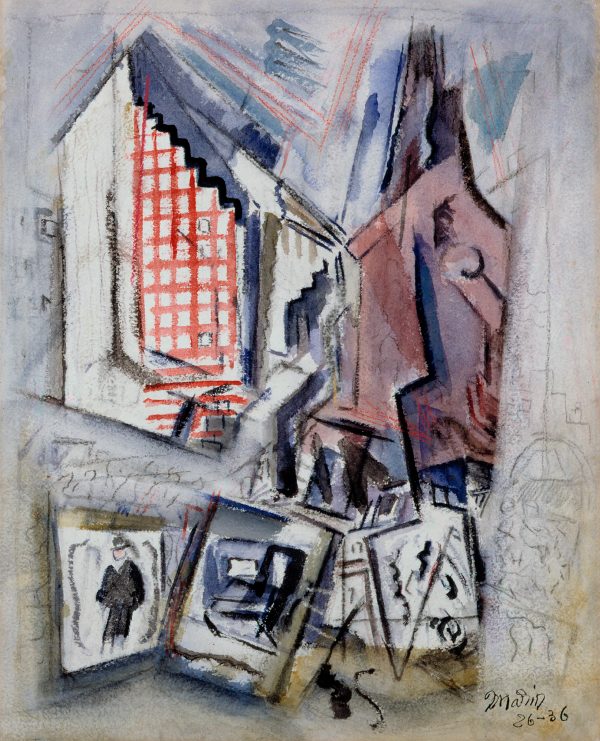
Region, Trinity Church, N.Y.C.
Marin, John
1926–36
Artwork Information
-
Title:
Region, Trinity Church, N.Y.C.
-
Artist:
Marin, John
-
Artist Bio:
American, 1870–1953
-
Date:
1926–36
-
Medium:
Watercolor, charcoal, and crayon on paper
-
Dimensions:
24 13/16 x 20 3/16 in.
-
Credit Line:
Wichita Art Museum, Roland P. Murdock Collection
-
Object Number:
M97.52
-
Display:
Not Currently on Display
About the Artwork
By the time Marin painted Region, Trinity Church, N. Y.C., he was dividing his year between homes in New Jersey and Maine. Marin’s residence in Weehawken, New Jersey was just across the Hudson River from New York, the metropolis that provided inspiration to the artist throughout his life. Marin apparently chose to live in the quiet suburbs rather than the city itself so that his experience of urban activity would be heightened through the repeated process of entering and leaving Manhattan. During his visits to the city Marin habitually recorded his impressions on paper, and often returned to the same subject numerous times. He first depicted Trinity Church, for example, in an etching of 1915. The date “26-36” that appears on Region, Trinity Church, N. Y.C., indicates that Marin worked on this particular watercolor over the span of a decade.1
Departing from the looser, more spontaneous compositions of the 1910s such as Sunset, Casco Bay, Marin developed in the 1920s a tighter, more rigorously structured style, as seen in Region, Trinity Church, N. Y.C. As the title suggests, Marin does not focus in this work on the church in isolation but also takes in the wider cityscape that surrounds it. Indeed, Trinity Church, identified by its steeple soaring into the top right of the composition, is almost lost amidst the cacophony of lines. In the lower register of the composition, Marin idiosyncratically encloses the forms of pedestrians and an automobile within drawn frames that play off the edge of the rectangular paper itself. By dividing and framing the composition in this way, Marin denies the restriction of the physical frame and increases the dynamic tension within the painting. The linear strength of the composition is intensified by Marin’s subtle use of graphite lines throughout the work, which he chose to leave unpainted on the right-hand side of the composition. The lingering influence on Marin of the cubist compositions he had seen at the Armory Show is evidenced in the flattening of forms and emphasis on planes, while the probable influence of Italian Futurism is felt in Marin’s dynamic use of line. The force of the work is amplified by the gesture and rhythm with which Marin typically endowed his many watercolor compositions.
In a 1951 letter, Marin wrote of this work as follows:
“As for this particular picture titled—Region Trinity Church New York—it came into being together with five other variations—as the result of my wanderings there abouts—these seeings— transposed into—symbol seeings—not losing the—core—of my seeing—Rythm [sic] throughout was looked for—ballance [sic] and construction—a playing part with part—movements of juxtaposition object—certain objects framed as it were to bear attention to themselves—each object taking its place. The whole—I repeat—to be a bal-lanced [sic] construction.2”
1. Ruth Fine, John Marin (New York; Abbeville Press, 1990), 148.
2. John Marin, undated letter to Elizabeth S. Navas, 1951, registrar’s files, Wichita Art Museum.